Stop Circus Suffering USA: 1 Introduction
An introduction to ADI’s “Stop Circus Suffering USA” Report.
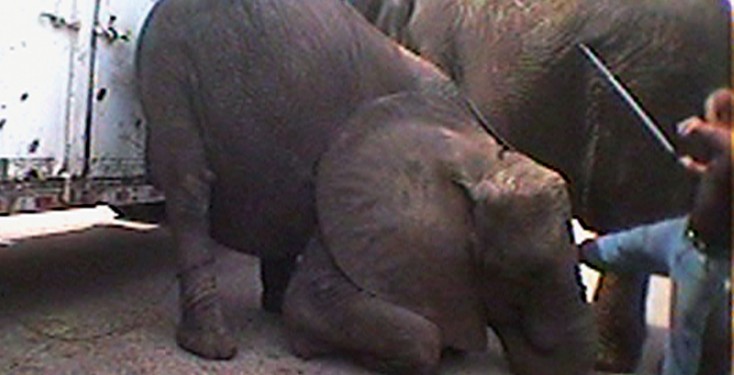
Animals in circuses belong in the past, to a time when humans were ignorant about the other species that share our planet. However, over the past one hundred years human understanding has grown – science can now tell us about the intelligence of other species, their means of communication, toolmaking, culture, family bonds and emotions. Psychological, behavioral and environmental studies have helped us understand their world. With this greater knowledge of the capacity for suffering in our fellow creatures who share this earth, it is no longer acceptable for us to abuse animals in circuses, just for our entertainment. It is not the behavior of a civilized, advanced society.
No one is saying ‘end circuses.’ Rather, let’s take animals out of circuses and let humans do the entertaining. This has economic benefits; ADI has found that as animal circuses close, the trend is that animal-free circuses replace them. The circus industry can still thrive and even increase overall attendance without the stigma of animal suffering.
ADI partner organizations have studied circuses all over the world. We observe how animals live, how they are trained, and importantly, the attitudes of the workers. We have gathered extensive observational data and videotape. Our studies have concluded that life for animals in circuses is one of deprivation and suffering – they are deprived of everything that makes their life fulfilling. Circus animals are taken away from their family groups, forced to do tricks that they do not want to do; forced to live in tiny, barren cages where they have to eat, sleep, and defecate all in the same space, or spend a large part of their day tied on short ropes. These animal care practices are common throughout the worldwide industry. In addition, circus animals are frequently kicked, punched, whipped and beaten to make them obey. Such treatment of defenseless animals degrades our society.
Some key findings from ADI’s studies of circus practices worldwide:
- Horses and ponies spend up to 96 percent of their time tied with short ropes in stalls, or tethered to trailers. Time in the ring, allowing them to run, is limited.
- Tigers and lions spend between 75 and 99 percent of their time in severely cramped cages on the backs of trailers. So called ‘exercise cages’, if used, add little more space, and time available to use them is limited.
- Elephants spend 58 to 98 percent of their time chained by at least one leg, and generally both a front and hind leg. The circus norm is to chain elephants overnight, either in tents or trailers. Elephant enclosures with circuses are desperately inadequate, and the regime of chaining, being prepared for the show, performing and giving rides means time in them is very limited.
- Animals in circuses suffer poor animal welfare and long, arduous journeys.
- Extended periods being tied up, chained, or caged results in abnormal behaviors that indicate these animals are suffering as a result of the environmentally impoverished, inappropriate conditions in which they live.
It is therefore essential that consideration be given to legislation to prohibit the use of animals in traveling circuses.
Legislation should specifically outlaw violence during training. Current animal anticruelty laws will not prevent violence in training if different standards apply to performing animals.
Circus animals in the U.S. are vulnerable to abuse:
- ADI’s studies of common training practices have shown that the public rehearsals frequently seen on the road are entirely different from the real training, where the animal learns its routine, which goes on in the permanent training center, behind closed doors.
- Once animals have been ‘broken’ they will probably spend the rest of their lives plodding through variants of the same routine, including the moments when they to refuse to obey or when they ‘pretend to attack’ the handler. The cats will perform this routine with any handler to whom they have been leased or purchased for the season.
- Intimidation and abuse of animals in circuses ranges from daily subjugation – shouting, screaming, banging cage bars, whipping – escalating to kicks, punches, up to a full-blown beating with iron bars, broom handles, pitchforks, or whatever is at hand.
- When moving lions and tigers for example, workers bang the bars of cages and cage tunnels with iron bars and scream, to get the cats to move quickly. Audiences do not realize that when a group of large cats come running into the ring, as if full of enthusiasm, it is because someone is standing behind the curtain with an iron bar in their hand (ADI observations). We have previously filmed a full-grown lioness urinating in fear when screamed at.
- For most of their time, animals are being cared for by untrained minimum-wage workers who are under pressure to move the animals fast and do not understand the species they are dealing with; this alone can lead to violence.
The Scientific Evidence on Suffering
Other than ADI’s evidence, there has been little first-hand data on the treatment of animals in traveling circuses and its effects on them. We have therefore reviewed the scientific literature on animals during transport, in confinement and in captivity for other industries, such as zoos, farming and laboratories. We have discussed the biological indicators of stress, as well as the behavioral and psychological effects of captivity and confinement in a range of species. This research is summarized in section 4 of this report.
The frustration caused to animals by extreme confinement in traveling circuses – living in a tiny cage where they can barely move around, or constantly chained to the ground – restricts their ability to perform their natural behaviors.
The scientific evidence is clear – if an animal has no control over its environment, and cannot move about to exercise its body and mind, this causes it to start to perform repetitive, abnormal behaviors which animal behaviorists call ‘stereotypical’ or ‘displacement’ behaviors – these behaviors are an indicator that the animal’s welfare has been compromised, and that it is suffering as a result.
The science, and our own observations, tell us that these animals experience mental as well as physical suffering in traveling circuses.
We conclude that the traveling circus is not a suitable environment for an animal. Restrictions of space, time, mobility and facilities mean that no animal will be able to behave as he or she would in his/her natural environment. Many species commonly kept in circuses have highly specialized behaviors, making it impossible to meet their needs.
Suffering in both humans and animals is not easy to prove. However, if animals behave in an unnatural manner or exhibit behaviors that cause concern, such concern is justified until proven otherwise. A civilization that considers itself humane would give potential victims the benefit of the doubt.
The Pilot Study
There are currently at least sixteen major U.S. animal circuses, some with multiple units that travel separately. We report here the results of a pilot study of nine randomly selected animal circuses in the U.S., using over 300 animals. ADI field officers studied training, performances and animal care practices, and found examples of animal abuse. This confirms that animal suffering is inherent in traveling circuses in the U.S., it is not restricted to wild or exotic species and despite popular misconceptions, domestic and farm animals suffer as well.
U.S. Law and Recommendations
In section 5 we discuss the Animal Welfare Act and the responsibilities of the U.S. Department of Agriculture (USDA) for licensing circuses and conducting inspections. The U.S. must take responsibility for some of the suffering of animals in foreign circuses, as there is evidence that circuses in Central and South America acquire their animals from U.S. circuses and animal suppliers. We raise some issues about the limitations of the current legislation, the USDA’s inspection guidelines, enforcement, and we make recommendations for updating the Act.
Defining Animal Welfare
It is important to describe what we mean by ‘animal welfare’. ADI believes that an animal’s welfare includes its physical and mental state. Good animal welfare implies both fitness and a sense of well-being.
The scientific literature discussed in section 4 covers both wild and domestic species, including cattle, sheep, pigs and deer during transport, captivity and confinement. The behavior of a domestic animal is still highly influenced by its wild ancestry, such as herding behavior in horses and predator responses in domestic and wild herbivores. Therefore, studies on domestic species give an indication to how related exotic species may respond to certain stimuli.
The welfare of an animal can be assessed on whether it has control over its environment and can move about to exercise its body and mind. The ‘Five Freedoms’ defines good animal welfare as:
- Freedom from hunger and thirst
- Freedom from discomfort
- Freedom from pain, injury or disease
- Freedom to express normal behavior
- Freedom from fear and distress
According to Webster, “The welfare of an animal is determined by its capacity to avoid suffering and sustain fitness” 2,3. The Concise Oxford Dictionary 3a describes suffering, “to undergo or experience pain or loss or damage or disablement” and includes mental as well as physical suffering.
Therefore fitness for an animal includes mental and physical fitness. So welfare is not just about ‘doing things’ to make animals feel better and keep fit, such as feeding them well and inoculating them against disease; it’s about giving animals some control over their environment 1,2,3. That control allows them to avoid pain and mental suffering and to maintain a degree of fitness compatible with self-preservation.
Measuring welfare is complex, but the scientific literature references a number of potential welfare indicators. For example, physiological indicators of reduced welfare can be an elevated heart rate or elevated cortisol level. A behavioral indicator of reduced welfare can be the occurrence of stereotypical behavior 4.
A stereotypy is a repeated, relatively invariate sequence of movements, which has no obvious function 4. Stereotypies are indicators of long-term coping problems. They have been described in battery-caged hens and in pigs 5, circus tigers 6, horses 7, autistic children and prisoners8, and many other species on farms and in zoos, laboratories and other captive situations. Abnormal behaviors like stereotypies do not arise in the wild.
Broom and Johnson: “In natural conditions, animals are constantly stimulated by changes in their physical and social environments. Where animals are brought under closer environmental control, on farms, in zoos, or in people’s homes as pets, the levels of some of the components of stimulation are reduced, while others are increased” 4. Animals have specific expectations of the consequences of different activities. If these fail to materialize, the animals cannot activate their own array of controlling procedures 4. Some animals respond to a lack of stimulation and a lack of control over their environment with apathy, others with stereotypies or increased aggression 4.
Both a lack of stimulation and a lack of environmental control are inherent in circus life. Stereotypies are particularly evident in captive wild species but are also seen in domestic animals, such as farm animals and horses.
Broom and Johnson: “…in most cases we do not know whether a stereotypy is helping the individual to cope with the conditions, has helped in the past but is no longer doing so, or has never helped and has always been a behavioral pathology. But in all cases the stereotypy indicates that the individual has some difficulty in coping with the conditions, so it is an indicator of poor welfare” 4.
Another aspect to consider in the response of animals to transport, captivity and confinement is stress, or “stimulation beyond the capacity for complete adaptation” 4. When an animal’s coping mechanisms are taxed beyond endurance and break down, the result is stress and distress.
Living in such confined conditions in the circus, it is little wonder that many animals in circuses go out of their minds; we call it ‘circus madness.’ ADI field officers have witnessed and recorded large numbers of animals exhibiting such disturbed behavior, including pacing up and down, weaving from side to side, head-bobbing and running in place.
Read this report in conjunction with the DVD Stop Circus Suffering (2008), which includes some of the disturbing video footage collected during the course of the pilot investigation. The video is available from ADI (http://www.ad-international.org) or can be viewed online at http://www.youtube.com/animaldefenders.
Read the Executive Summary of the Report.
1 Introduction
2 The Traveling Environment
3 Pilot Study: Animals in Traveling Circuses in the U.S.
4 The Scientific Evidence
5 The Animal Welfare Act
6 Recommendations for Action
7 Appendix: Public Opinion
8 References

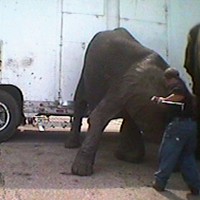
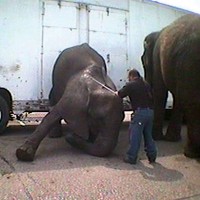
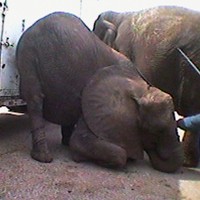
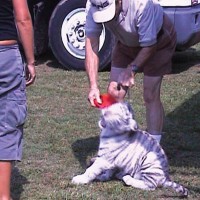
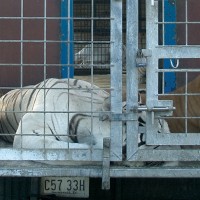
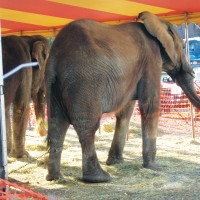
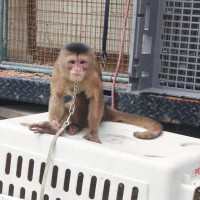
well done on this !!! I support you 210% !!! Carry on , you mean a lot to this world